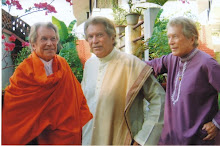At the turn of the 20th century, Las Vegas, N.M., was considered the Queen of the West. It was also considered the wildest town in the West.
The arrival of the railroad in 1879 inspired the building of the rail side Depot Hotel. English restaurateur Frederick Henry Harvey opened a lunchroom/dining room there, providing the Harvey Girls to wait on the customers.
Will Rogers quipped that Fred Harvey “kept the West in food – and wives.”
Many a lonesome cowboy or railway worker fell in love with a Harvey Girl working in the hotels and dining houses servicing the AT&SF Railway. It has been estimated that out of the 100,000 girls hired to be Harvey Girls, 20,000 of them married cowboys or railroad men, much to the exasperation of Fred Harvey.
Yet he should not have been too surprised. The girls had been handpicked for being of good character, single and attractive. They were trained in rules of etiquette and in providing first class service in their serving high quality food. Before Fred Harvey’s innovations, travelers suffered poor food and little service while on their trips through the Southwest.
The Depot Hotel was later destroyed by fire but replaced by the Spanish Mission Revival-styled La Castañeda, which opened in 1898. The Harvey Girls worked here, as well as at the Montezuma Castle up the road from Las Vegas. Two previous hotels at the hot springs burned down, but the third version, a Queen Anne Revival exists today but is now the United World College – USA.
La Castañeda Hotel was the site for the first Rough Rider Reunion in 1899, attended by New York Governor Theodore Roosevelt, who served as Lt. Colonel for the Rough Riders. Las Vegas provided 21 Rough Riders to Teddy Roosevelt’s 1898 Cuban Campaign of the Spanish-American War. The City of Las Vegas and the Rough Riders Memorial trace the history of the Rough Riders, and their official reunion home is Las Vegas.
Some years ago, Allan Affeldt purchased and restored La Posada in Winslow, Ariz. This was also a Harvey hotel prestigiously located on the AT&SF route. In 2014, Mr.Affeldt expanded his interest in restoring historic hotels by purchasing both the Plaza Hotel and La Castañeda. Today, the historic Plaza Hotel is in full operation complete with a haunted room (#310), a full service dining room, saloon and expanded ballroom. The restoration of La Castañeda at the railway station is a work in progress, with partial occupancy projected for later this year. These two vintage hotels will bring a renewed energy into Las Vegas along with the lingering spirit of the Harvey Girls.
Wild West Oasis
Las Vegas has had a colorful history. During the 19th Century, it enjoyed a prestigious location on the old Santa Fe Trail where the Great Plains meet the Sangre de Cristo Mountains and trade flourished. Being on the Mexican frontier with the United States to the east was a boon to this bustling town. It was the first town of any size to be encountered after 600 miles of travel along the Santa Fe Trail from Kansas.
Earlier, the Mexican colonists were awarded Las Vegas in a land grant in 1835. The plaza was built as a complete square of adobe buildings with gates to the north and south for communal protection from Apache Indian raids. From atop one of these buildings in 1846, General Stephen Watts Kearny declared New Mexico a United States territory. Las Vegas was a quasi-military fort until the opening of Fort Union in 1851. The Las Vegas Hotel was built in 1850, the first two-story adobe building in New Mexico. The growth of the town exploded with the arrival of the railway.
John Henry “Doc” Holliday, a dentist from Georgia, opened a saloon that year. Wyatt Earp visited him for a month and convinced him to move with him to Tombstone, Ariz.
Las Vegas was a wild frontier town hosting the Dodge City gang and other outlaws. It was thought to be the worst of the worst places in the West for violence. Gambling, gun fights, robbery and murder prompted the town to organize vigilantes, whose main leader was Miguel Antonio Otero, Jr. He later became the Governor of the Territory of New Mexico (1897-1906).
Law breaking diminished as Las Vegas embraced the Twentieth Century. The train bought visitors as prosperity increased with the availability of good hotels and the fine service of the Harvey Girls. The West was tamed!
For more information about the sights and sounds of Las Vegas, N.M., contact the Las Vegas Visitor Information Center at (800) 832-5947 or atinfo@visitlasvegasnm.com. For information about the Historic Plaza Hotel, call (505) 425-3591 or email them atreservations@plazahotellvnm.com or visit www.plazahotellvnm.com.






Marvelous and delighting! How wonderful to see you back in the blogosphere. Love the photo, too!
ReplyDelete